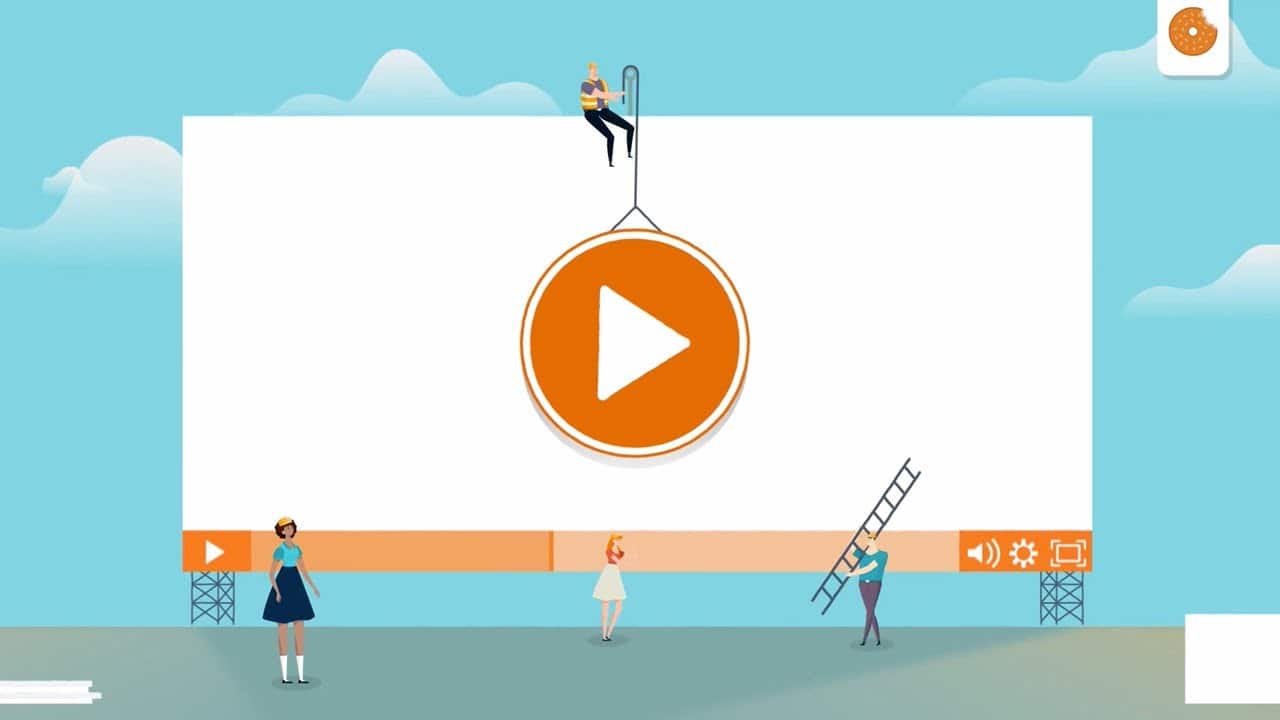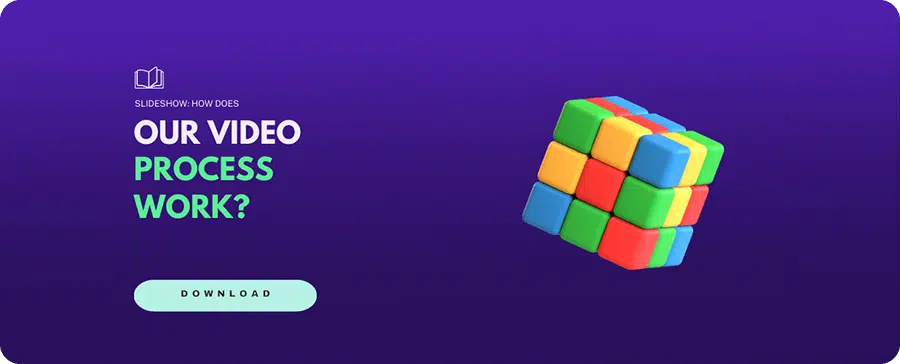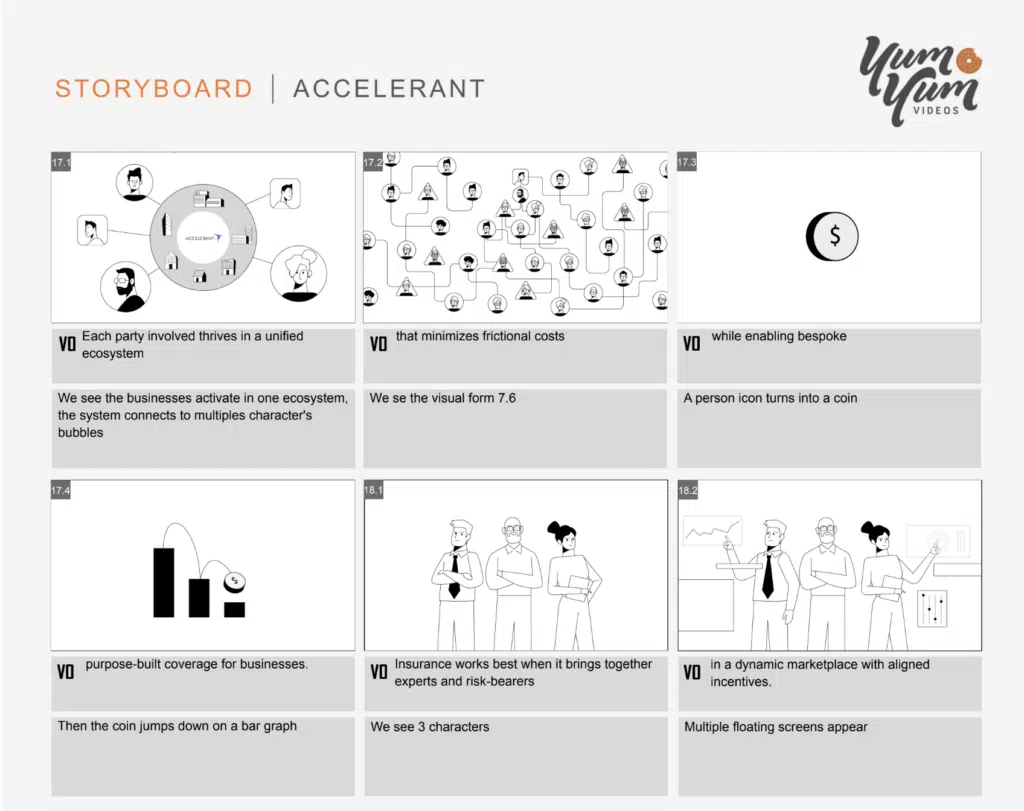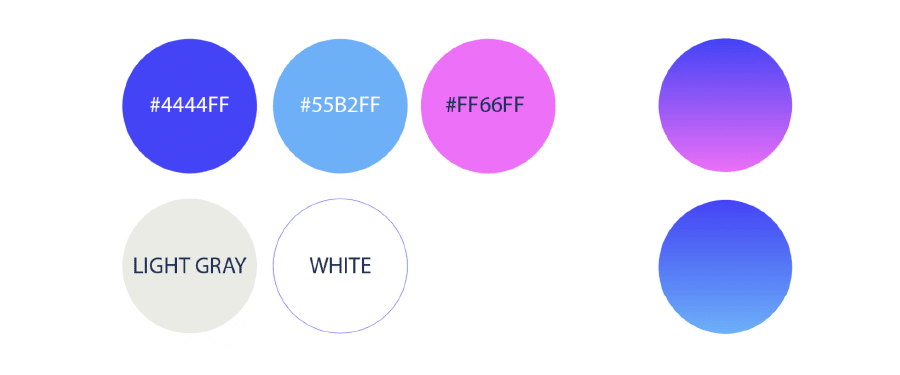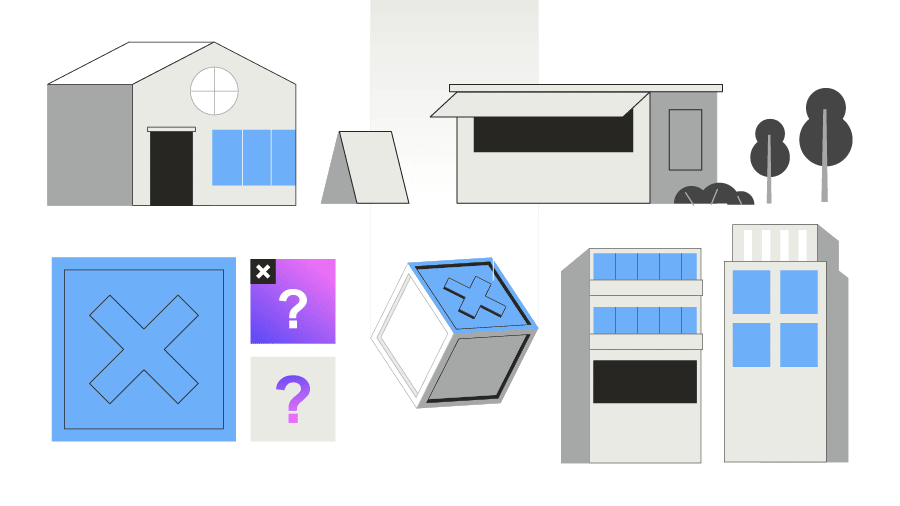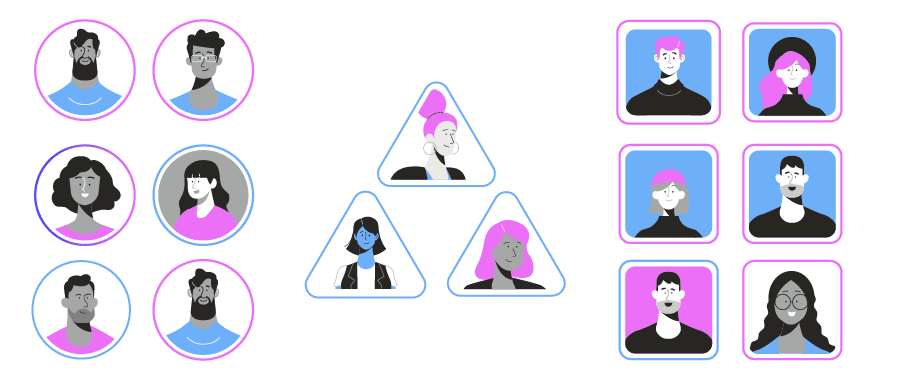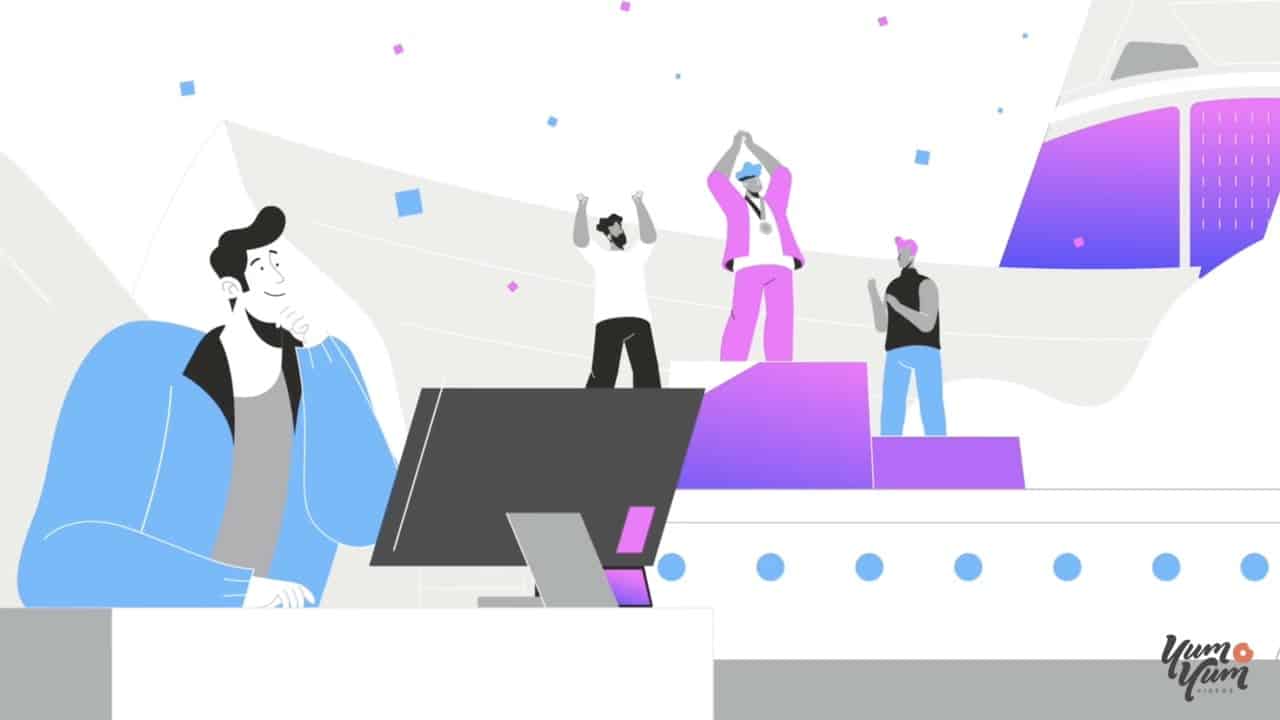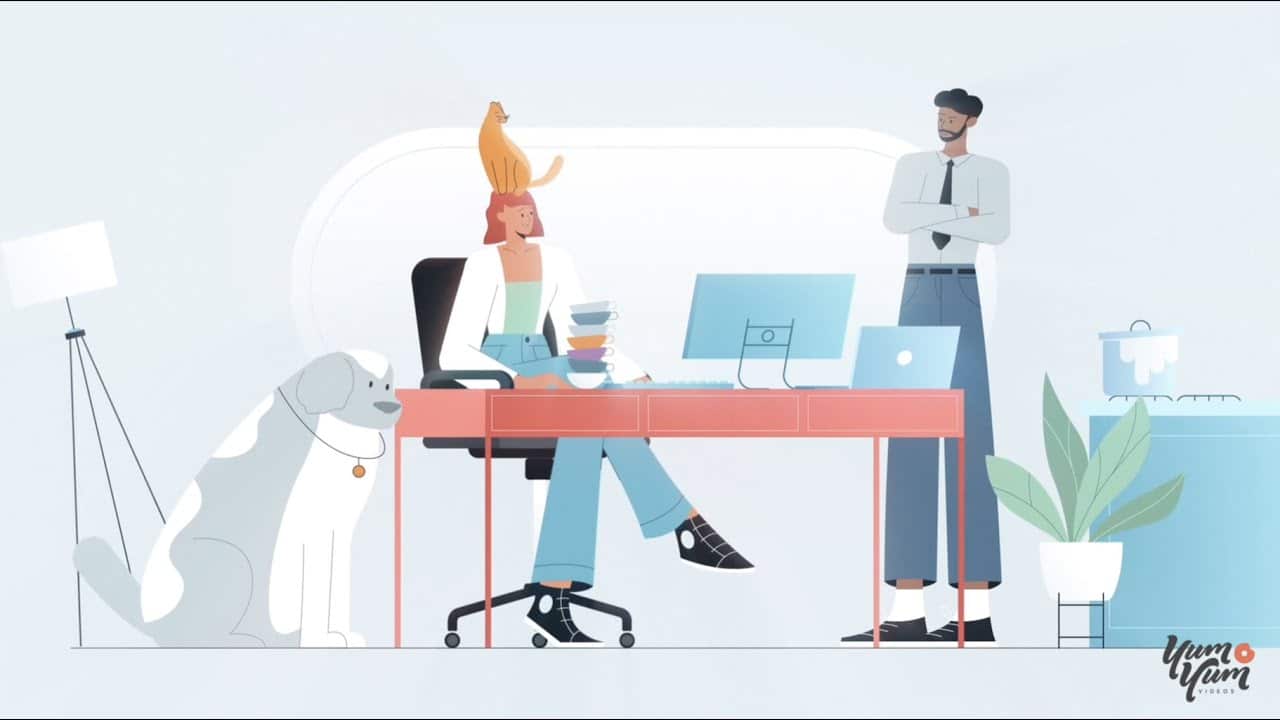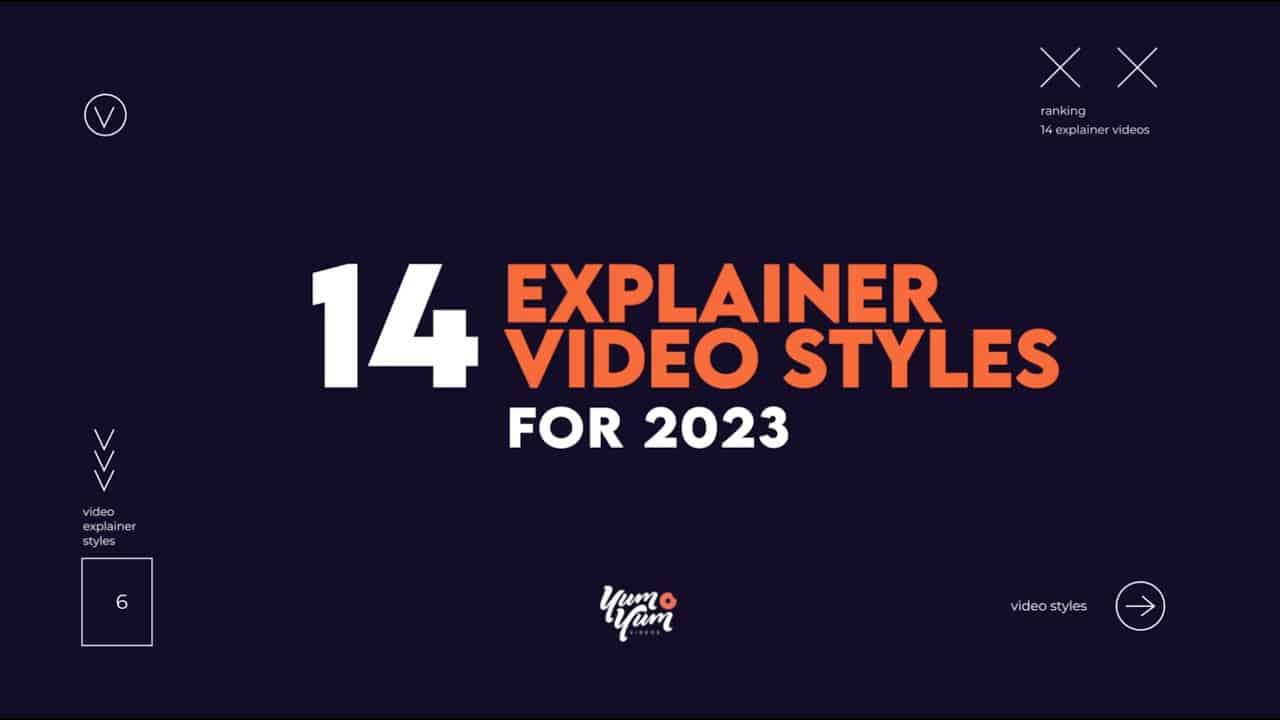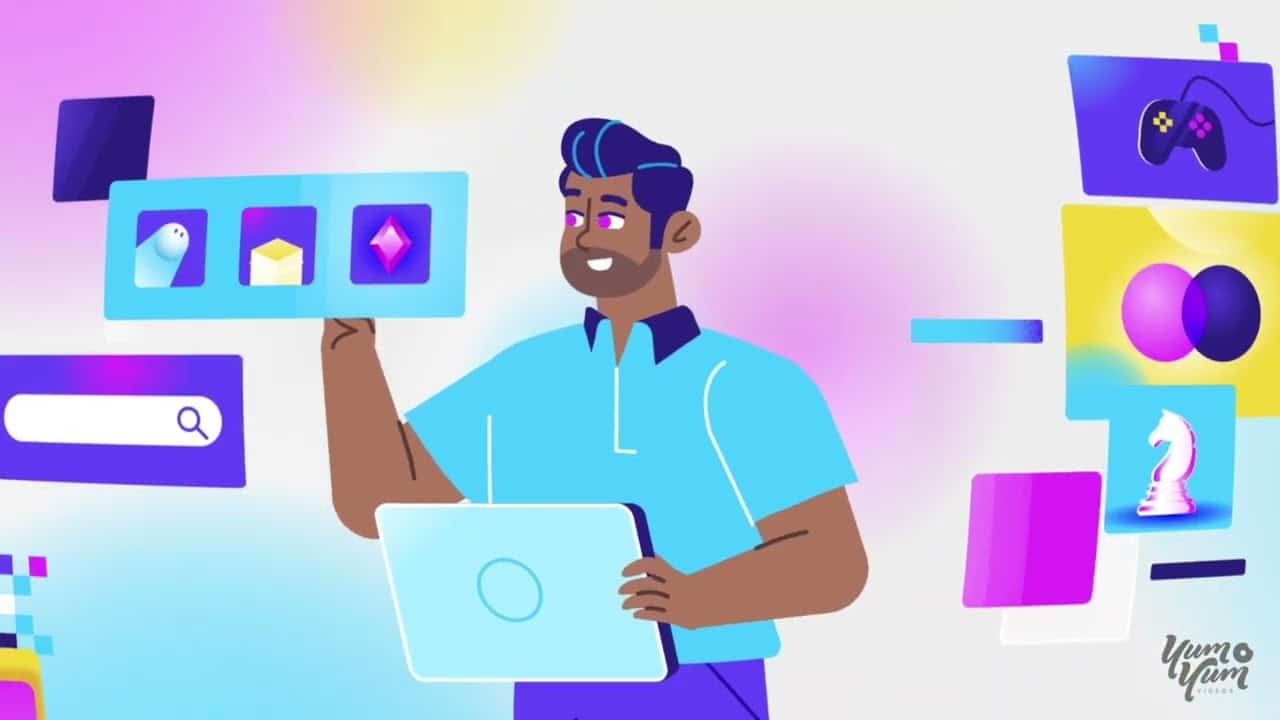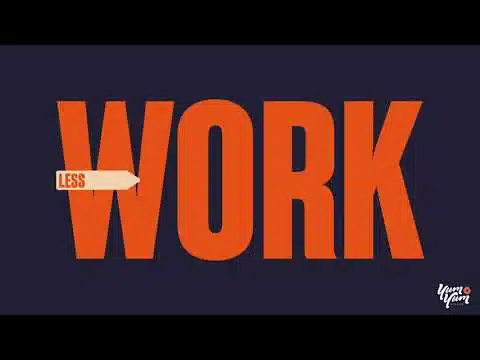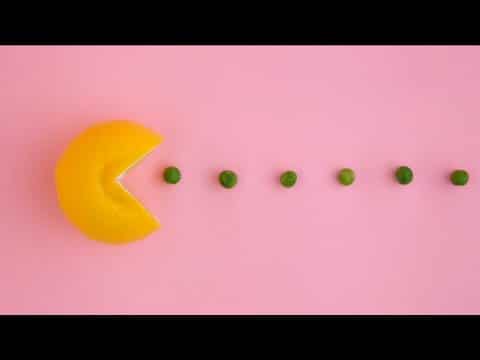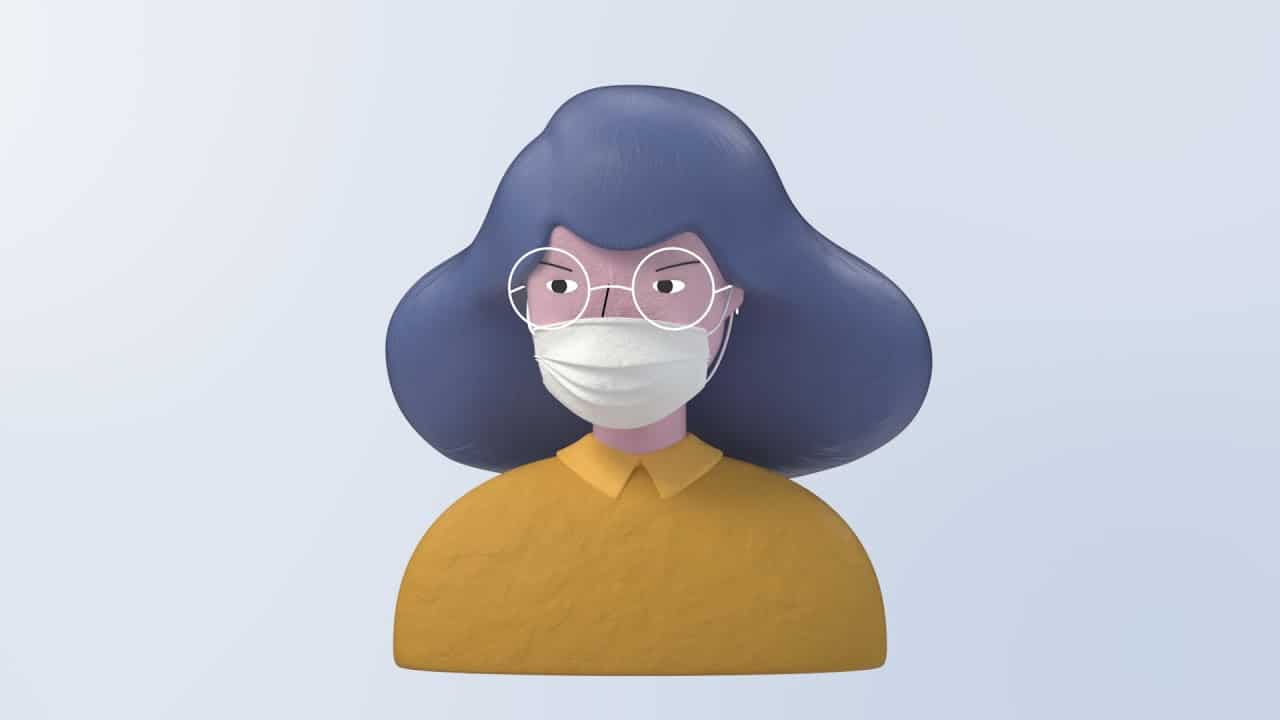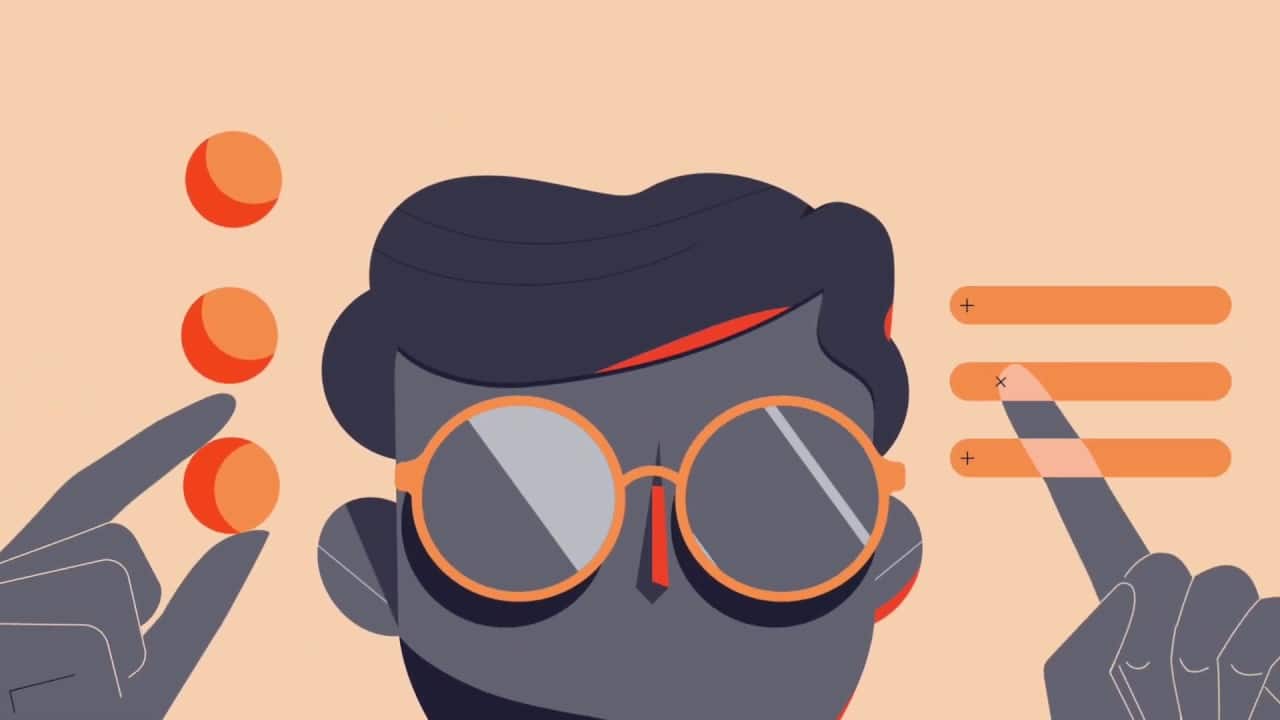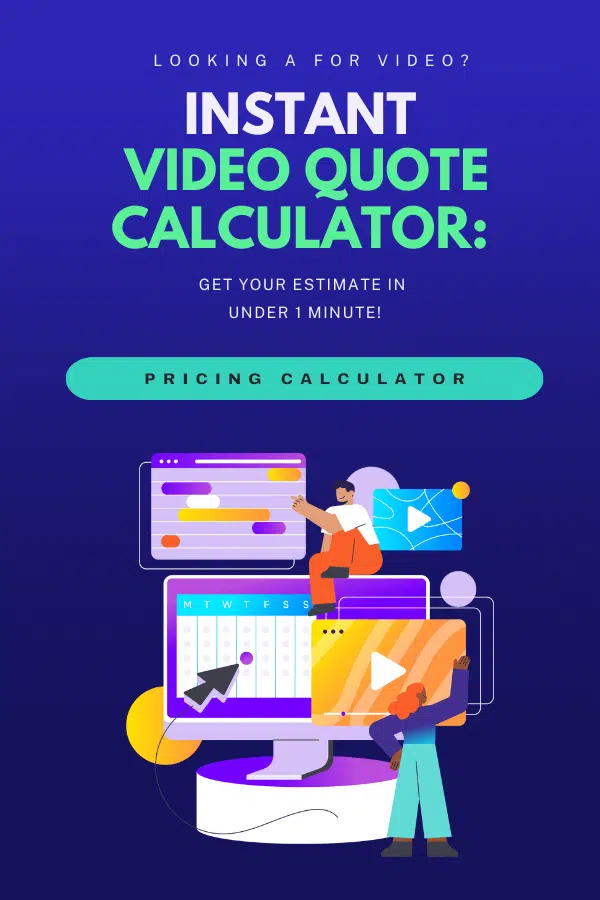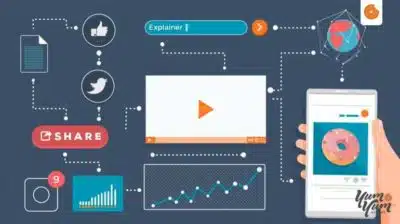The Animation Process – Complete Step by Step Guide 2026

Written by Victor Blasco
CEO of Yum Yum Videos
28/12/25
Author: Victor Blasco
19 min reading
Video ProductionVideo Production Companies
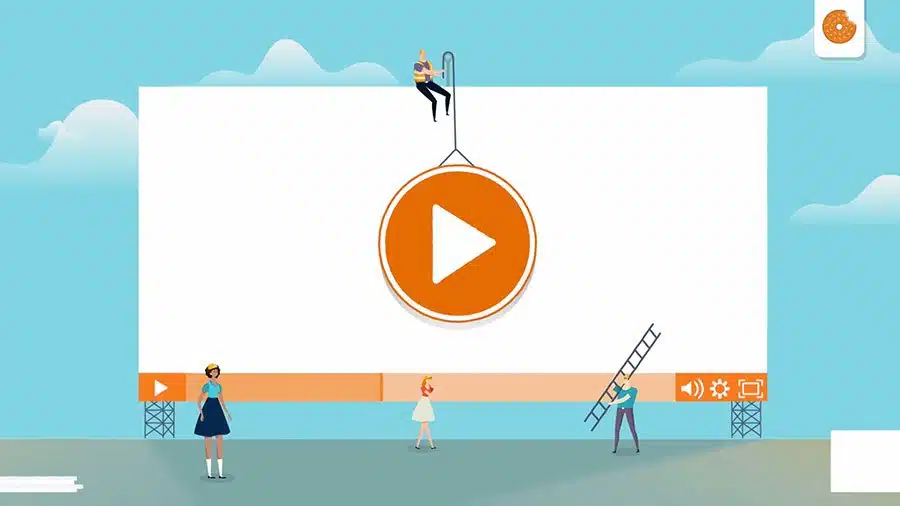
The animation process is a structured workflow that transforms an idea into a finished animated video through clearly defined creative and production stages.
Table of Contents
At a Glance: The Animation Production Workflow (2026)
Total Duration: 6 to 8 weeks for a standard project.
Core Phases: 10 steps, from Research and Scriptwriting to Sound Design and Final Delivery.
Investment: Custom 2D animation typically ranges from $5,000 to $20,000 per finished minute.
Key Deliverable: A high-quality, strategic video tailored to brand identity and business goals.
Best For: Startups and enterprises looking to clarify complex messages and scale their growth.
If you’re considering investing in an animated video in 2026, you’re probably wondering how it works in practice: how long it takes, what it typically costs, and who’s involved at each stage.
Having produced hundreds of animated videos for startups, scale-ups, and enterprise teams in the US and beyond, we’ve built a repeatable process that balances creativity, clarity, and efficiency.
Yum Yum Videos is an animated video production company headquartered in Miami, working with clients across the United States and globally.
In this guide, we walk you through the full animation process step by step, based on how we typically work at Yum Yum Videos.
What Are the Main Steps in the Animation Process?
Modern computer software and digital tools have streamlined animation production, and while workflows can vary between studios, the animation production process typically consists of ten core phases.
We’ve used this same animation workflow across hundreds of client projects in the US, including complex industries like insurance, fintech, healthcare, and SaaS.
1. Research
2. Script
3. Storyboard
4. Art Direction
5. Voiceover narration recording
6. Illustration
7. Animation
8. Sound Design
9. Integration
10. Deliverable
The following sections go over these animation steps one by one, giving you a detailed overview of what each of them typically entails in our video company.
1. Research: Getting to Know Your Brand
Making animated videos is not only about character design and script brainstorming. In fact, it’s crucial to gain a thorough understanding of your business first. That’s why we always take the time to learn as much as possible about your brand and your product and service so we can discover your specific needs and goals for your animated video.
How do we do this? Well, we send clients a creative brief with questions about their brand’s values, identity, and target audience. We also ask about the video’s goals and the tone it should have. Here’s a downloadable version of our brief in case you want to have a better idea of what it involves.
Once you’ve filled out this document, we will hold an online meeting to discuss further details and get both your team and ours on the same page. Finally, with all your information in mind, we put our heads together and start working towards the next stage of the 2D animation process.
2. Script: Defining the Concept
What’s the message you want the video to transmit? That’s what the second animation step is all about —defining your piece’s core message and writing a cohesive script to effectively deliver it in a compelling way.
No matter how complex the concept we’re working on is, we always develop a clear and simple script that’s easy to understand and lets your message shine through.
People often tend to skip scriptwriting, but we can’t stress enough how critical this animation phase is. Believe me when I say it’ll be the foundation for the rest of your video and will save you a lot of time and effort down the road. There are no two ways about it: not having a script or using a poor, rushed one can never result in a quality piece.
3. Storyboard: Visualizing the Script
The third step of the animation process is crafting the storyboard. If you’ve never heard of this term before, you can think of it as the visual version of your script that can help you better organize your story.
Now, when you want to create an animation, you should follow a comic book-like format to illustrate the keyframes of your future video. In our case, we also add a description of the shot, which includes the corresponding script lines and any other relevant details about how the story will unfold.
We consider the storyboard as the roadmap that our production team will follow to effectively produce a coherent and engaging piece for our clients. It’s one of the most valuable tools in our animation production workflow, as it not only allows our clients to visualize and check how the video will look, but also helps us prevent inconsistencies, mistakes, and unnecessary delays.
Many of the visuals and examples used throughout this article come from a series of nine explainer videos we produced for Accelerant. These videos supported the company during a period of significant growth, in which it raised over $1B in funding and reached a $6.4B valuation. You can read the full Accelerant Case Study here.
4. Art Direction: Deciding the Visual Style
In this stage of the 2D animation process, we focus on creating your video’s style frames, which are a series of illustrations that reflect the piece’s overall aesthetic. They include the art design of every important element that appears on screen, such as the characters, product, color palette, typography, and the keyframes of the video.
We typically provide three style frames with the color palette, the art design of the characters, and some scenes from the storyboard so you can get a sense of how the final asset will look and feel. Needless to say, we pay special attention to delivering style frames that accurately match your brand’s identity. What’s more, with this animation step, we can build a solid basis for the rest of our team to work on.
5. Voice-over Narration: Choosing the Right Actor
The next crucial (and fun!) animation step involves bringing the script to life with the help of the right narrator. It’s important to choose a professional voiceover talent that can help set the tone for the video.
That’s why, in this phase of the animation production process, you’ll listen to our pool of talented voiceover artists and select your favorite one. It can be pretty hard to choose only one, so to help you narrow down your options, we always suggest that you first think about whether you want a more masculine or feminine voice. Then, choose the actor whose style you believe represents your brand’s attitude more accurately.
6. Illustration: Creating the Characters and Backgrounds
Once we get your approval on the style frames and all the previous animation steps, it’s time to start working on the design of the different graphic assets.
The illustration stage of the animation process can be done using traditional animation methods, such as the hand-drawn technique, or using computer software such as Illustrator or Adobe Photoshop —or both!
When illustrating with digital tools, the artist can sketch their character and background ideas using different digital brushes provided by the software. They can work directly on the canvas or on separate layers to allow for quick adjustments and to easily undo or modify strokes.
But more importantly, by separating different parts of a character or object into different layers, the artist can prepare them for rigging and animation. Each of those layers can then be manipulated and animated independently in the next stage of the process using a different kind of software.
Once they’re happy with the sketch, they can refine the line art and begin coloring, shading, and adding texture to the illustrations. The artwork is always created with high resolution to ensure clarity and detail, and exported in a suitable file format, such as PNG and JPG for individual image files or PSD and AI for layered files.
In our case, we’ll also deliver them to you in a PDF file so you can see how the story will visually develop.
7. Animation: Bringing the Story to Life
Now’s the time for the most transformative part of the animation process! Here, our skilled animation artists set out to bring the illustrations to life.
Using sophisticated software, they import the illustrations and start rigging them. This means they build a sort of skeletal structure that controls the movement of each part of the illustration at specific points in time to create the animation.
After that, they create keyframes, which, in simple terms, are the frames that determine a character’s important poses or positions.
Ever wondered how animated characters can move so smoothly? Well, that’s thanks to the next animation step, which is called inbetweening. In simple terms, this involves filling the gaps between the keyframes to achieve smooth and fluid motion. In traditional hand-drawn animation, the artist had to manually create each and every in-between frame, which is why this was such as time-consuming technique. Nowadays, we can use interpolation to generate these intermediate frames and save a lot of time.
Finally, our team carefully reviews the animation and checks for any inconsistencies before exporting it into a suitable file format. Moreover, they also clean up any imperfections in the frames to ensure a polished, professional-looking result.
And that’s how you create an animation. To no one’s surprise, this stage is one of the most complex parts of animation production, so it can take some time to complete it!
8. Audio Editing: Adding Sound Effects
We’re almost there! The visual part of the video is over and done with now, so it’s time to buckle down and focus on the audio.
In this step of the animation process, we edit and synchronize the voiceover recording, sound effects, and music with the visual counterpart.
We’re well aware that the music and audio quality can make or break your animated video, so we pay close attention to getting the best result possible.
9. Integration: Putting Everything Together
As part of the final stages of animation production, every digital asset and individual frame must undergo rendering. This means that they will all be combined into a single video file according to the artist’s specifications.
The process can be entirely customized, so, for example, you could set your desired resolution, aspect ratio, frame rate, and more parameters depending on your project’s requirements. Other than that, it’s important to note that rendering can often be one of the most time-consuming parts of making an animated video, particularly if you’re dealing with complex scenes or high-quality output.
Then, the final animation step of this stage takes place. In post-production, the animation is enhanced through careful editing. Here, you’d use color correction techniques and add any final touches or effects to the animation to make it look awesome.
10. Deliverable: Finetuning the Details
Finally! The animation process is over. All we have left to do now is adjust the video to your liking.
Since we’re committed to satisfying our clients to the fullest, we’ll send you a deliverable as part of the animation production workflow, so you can let us know what you’d like to change.
Including the round of changes, finishing all the animation steps can take up from 6 to 8 weeks in total.
And there you have it! A custom 2D animated video of the highest quality 😉.
Why Most Animation Projects Stall: While many agencies follow a similar 10-step list, projects often fail during the Script-to-Storyboard transition. At Yum Yum Videos, we emphasize ‘Visual Clarity’ early on to prevent expensive revisions during the animation phase. Planning 20% more at the start saves 50% of time at the end.
Typical Animation Process Timeline (2026)
Typical Animation Process Timeline: 6–8 weeks. To optimize efficiency, some stages of the animation process happen simultaneously rather than sequentially.
1. Research (2–3 days) Understanding the brand, goals, audience, and use case through a creative brief and kickoff alignment.
2. Script (3–5 days) Defining the core message and writing a clear, structured script that sets the foundation for the entire project.
3. Storyboard (5–7 days) Visualizing the script scene by scene to establish pacing, structure, and narrative flow before production begins.
4. Art Direction (3–5 days) Developing style frames, characters, color palette, and overall visual direction for approval.
5. Voiceover Narration (2–3 days) Casting the professional talent and recording the narration. This stage typically runs in parallel with Illustration to optimize timelines.
6. Illustration (7–10 days) Designing characters, backgrounds, and all visual assets, custom-illustrated and layered for animation.
7. Animation (2–3 weeks) Bringing the story to life through rigging, keyframes, fluid motion, transitions, and visual refinements.
8. Sound Design (2–3 days) Adding sound effects (SFX) and music, and synchronizing the audio precisely with the animation.
9. Integration (2–3 days) Compositing scenes, rendering the full video, and applying final technical polish.
10. Final Delivery (3–5 days) Handling final review rounds, implementing adjustments, and delivering master files ready for distribution.
Timelines can vary depending on complexity, number of scenes, and revision rounds.
Extra Bonus: Types of Animation (in a Nutshell)
After diving into how to create animated videos, it’s often useful to take a quick look at the main types of animation productions you can go for.
1. 2D Animation
Two-dimensional animation consists of flat characters, objects, and scenarios – flat being the keyword here.
This is the most popular animation style in video marketing, so it’s the one we used as a reference to explain the overall animation process. Don’t worry, the steps don’t vary much in other production styles, and you can find more examples in our portfolio.
2. Motion Graphics
This is the ultimate animation style if you want to give movement to text, numbers, charts, and symbols. It’s the go-to option to communicate hard data in a clear and dynamic way or create overlays for live-action videos.
3. Stop Motion
As part of the animation production workflow, the stop motion artists place elements in front of the camera, take a picture, move the pieces a tiny bit, take another photo, and so on. Each picture represents a frame, so when you place them in a sequence, you obtain the illusion of continual movement.
This beautiful effect gives an artistic feel to marketing videos, but the stop-motion animation steps can be tedious, costly, and slow.
4. 3D Animation
In a 3D animated video, the elements on the screen have not only height and width but also depth. Unlike a 2D animation process, 3D characters and objects are modeled from a digital mesh instead of illustrated.
This is the ideal style for product videos; they are useful for showing the inner workings of a mechanical product or offering viewers an immersive visual experience. That said, 3D animation phases are often highly expensive.
A Bit More about Yum Yum Videos’ Animation Process
Our animation production workflow follows the same core stages used by most professional video agencies. What makes the difference is how consistently and rigorously those stages are executed.
At Yum Yum Videos, the process starts with listening. We take the time to understand our clients’ goals, constraints, and audiences before any creative decisions are made. This early alignment is key to producing animated videos that are not only visually strong, but strategically sound.
Attention to detail is built into every step of our animation process. From scripting and storyboarding to illustration and animation, each stage goes through multiple layers of review to ensure clarity, consistency, and quality. This disciplined approach allows us to deliver polished results while minimizing rework and delays.
Yum Yum Videos is an animated video production company headquartered in Miami, working with clients across the United States and globally. Our workflow is designed to meet the expectations of the US market — clear communication, reliable timelines, and production quality that scales with growing companies — while being executed by a highly specialized creative team.
We’re best known for supporting companies during high-growth phases, helping them clarify their message through video as they scale, raise significant funding, and navigate major business milestones.
.
We also provide our clients with:
- One of the highest animation qualities in the market thanks to the hard work of our dedicated team of experts.
- A fully customized video from beginning to end.
- A smooth and flexible motion graphics and 2D animation process with several layers of quality control.
- The best price-quality guarantee with no hidden fees down the road.
- A smooth communication flow – no leaving you in the dark during any of the animation phases!
But don’t just take us at our word! You can check our reviews at Google, Clutch, and FixThePhoto for more details on what it is like to work with our team.
So, if you want a hand with your animation project, don’t hesitate to drop us a line! We’ll be happy to embark with you on this new adventure 😄!
A Bit of History on the Animation Production Process
While the animation process has evolved significantly over time, the core production principles remain the foundation of modern animation workflows.
Animation has been around for quite a while now. However, the process required for bringing characters and stories to life was quite different before the advent of computers and digital tools revolutionized the video industry. Back then, films and short videos were made entirely by hand, following a complex and painstaking process that could take years to complete.
Hand-drawn animation is a technique that involves drawing each and every frame of a story sequentially on a transparent plastic sheet called a “cel.” Then, each cel would be photographed and played back in rapid succession to create the illusion of motion.
This animation production process required highly skilled professionals and meticulous attention to detail, which is why it was ultimately replaced by more modern techniques like 2D and 3D animation.
Frequently Asked Questions about the Animation Process
Learning about how to make animation videos might’ve left you with some questions. We’ve compiled the most common questions our clients ask to help you navigate your next project with confidence.
1. How important is planning in the animation process?
We understand that planning might be boring and tedious, and you want to get to the juicy part and actually create an animation video. However, planning is a crucial step in animation production because if you don’t build a blueprint for your video, you’ll most likely end up facing serious setbacks and delays during production.
Minor issues, such as the script being slightly longer than it should be, can be fixed on the spot, but if you choose the wrong video type for your goals, you’ll be facing a big waste of time and resources. In the worst-case scenario, you’ll end up with a piece that can’t accomplish the goals you set out for your campaign. To avoid that, it’s best to take the time to do your due research and plan your video.
2. How much does animation cost?
The total cost of an animated video is closely tied to the animation process itself — including the number of production stages involved, the level of detail required, and the overall timeline.
When working with a professional animation studio, pricing typically reflects the scope of work, creative complexity, and production quality. As a general reference, a custom 2D animated video usually ranges between $5,000 and $20,000 per finished minute, depending on factors such as style, length, revisions, and delivery speed.
More complex visuals, tighter timelines, or additional production requirements can increase costs, while simpler styles and streamlined workflows may reduce them. For this reason, most professional studios provide custom estimates rather than fixed pricing.
3. How long does it take to animate 1 minute of video?
This is an incredibly hard question to answer because there are many factors that come into play, such as the number of characters, the actions they perform, and the animation style you choose. Regardless of that, leaving aside the time devoted to all the previous stages and to post-production, and if you already know how to make an animation, it can take anywhere between 12 days and 3 weeks to just animate 1 minute of video. Timelines can vary depending on complexity, number of scenes, and revision rounds.
4. How long does the animation process take to complete?
Most animated video projects take 6 to 8 weeks from kickoff to final delivery. The exact timeline depends on factors like video length, number of scenes, visual complexity, and how quickly feedback is provided. At Yum Yum Videos, many projects are completed in around 6 weeks, with additional time added when revision rounds or approval cycles extend the process.
5. Is the animation process flexible?
If you’re making a silent video, you can (and you will) skip recording the voice-over narration and adding sound effects. But in general terms, the process doesn’t allow for much flexibility because each stage is important to making a great animation video.
With most professional companies, you do have some wiggle room for customizing the timeframes and giving feedback, though. For example, at Yum Yum Videos, you can ask us to speed up the production process and even request more revision rounds. However, you do need to bear in mind that working toward faster deliveries will always translate into a price increase to accommodate the increased production effort necessary to meet tight deadlines.
Wrapping Up
Rome wasn’t built in a day – and neither was any great animated video out there!
To create awesome explainer videos, we put plenty of time and care into them and strive to get the best results for our clients. Not to mention there are many people involved in any worthy animation process, namely a director, scriptwriter, illustrator, animators, voiceover artists, and more. No wonder why the production can take weeks!
But don’t despair: once all the animation steps are completed, and you have an awesome video in your hands, you’ll see the waiting will pay off big time!

Victor Blasco – CEO & Marketing Strategist
Víctor Blasco is the founder and CEO of Yum Yum Videos, an explainer video company. He is also an audiovisual designer and a video marketing expert. When he's not running his business, Víctor enjoys studying Chinese philosophy and geeking out over science fiction films and comics. The Force is strong with this one!
